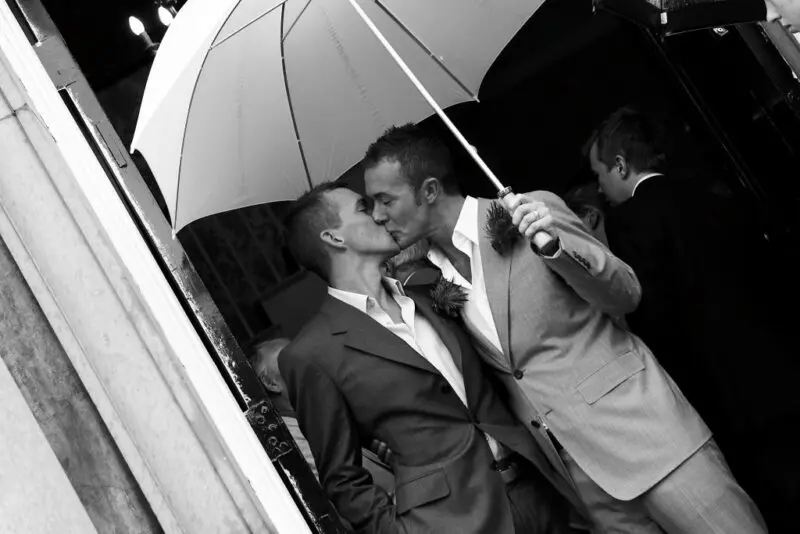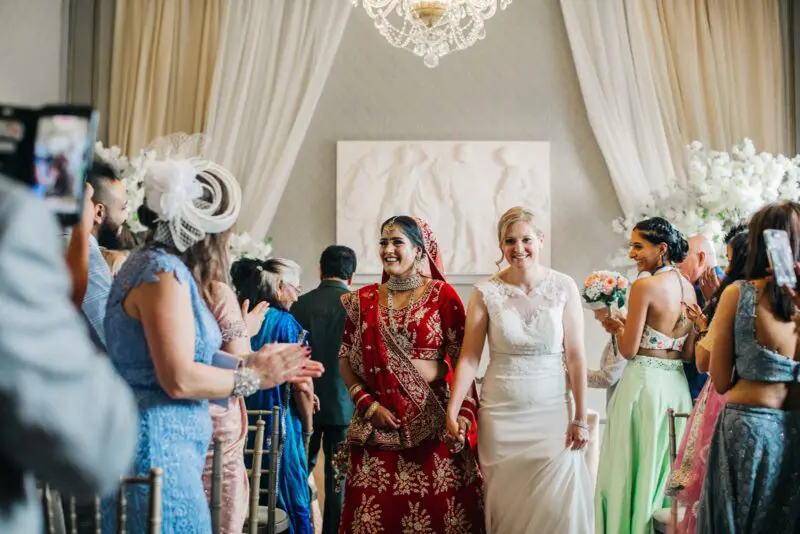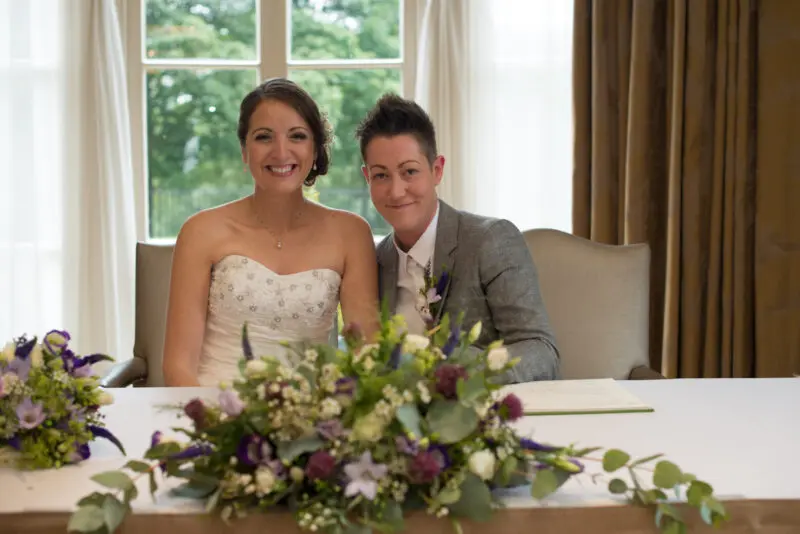Whilst weddings in the UK are slowly starting to get with the times, the vast majority of wedding traditions are firmly embedded in the notion of a bride and groom. So what happens if you’re planning a gay wedding? What traditions can you keep and what should you change?
Each year the Dine team look after hundreds of wedding couples, each one with unique ideas for their wedding day. We asked the Dine Event Managers for their top tips for planning a gay wedding.
Create your own wedding party
“Traditionally, the wedding party is made up of bridesmaids and groomsmen (or ushers)- but there’s no reason for it to be that way” says Senior Events Manager Kim Myers. “We’ve seen bridesmen and groomsmaids as wedding supporters; one couple had two sets of bridesmaids, one each, in different colours to denote the two brides. The one thing I would recommend is that you if you aren’t having a ‘Bestman’ or ‘Chief Bridesmaid’ you make sure you allocate those jobs, so everyone knows what they are doing on the day.”
Swap out the seating plan
“It’s old fashioned, but some people still think there should be two sides to the seating plan for a wedding ceremony- left hand side for the bride, right hand side for the groom” explains Howsham Hall’s wedding specialist Becky Scutt. “You could still have different sides if you wish, but most couples nowadays choose to mix up the seating. Sometimes couples ask ushers to explain to the guests, or sometimes a welcome sign at the entrance tells guests to ‘pick a seat, not a side’. ”
What to wear
There are no rules on what to wear for an LGBT-wedding, so couples can have free rein! The big white wedding dress, tux, morning suit, matching waistcoats- let your personality shine through! “I would recommend couples co-ordinate their outfits” says Event Manager Liam Cheeseman, who is based at The Mansion. “You don’t need to go shopping together- although many couples do- but just having an idea of what your other half has chosen so you can avoid colour clashes. Also if you are both going for traditional big wedding dresses, we’ll need to make the aisle slightly wider to accommodate you both, so do let us know!”
Come down the aisle together
In a traditional western wedding ceremony, the bride comes down the aisle to meet the waiting groom. You might still have a similar set up, or you might choose something completely different.
“We’ve had wedding couples come down a single aisle together, or we had one couple who wanted two aisles, so they could enter the room at the same time and meet up at the front before their guests. That one took a bit of rehearsing to make sure they both arrived at the front at the same time!” says Dine’s Head of Events, Jenny Atkinson.
Choose a celebrant-led ceremony
Rebecca Barker, Wedding specialist at Rise Hall, advocates using a wedding celebrant. “Civil wedding ceremonies are quite restricted in what you can say, the music and readings you can use.” she says. “Using a celebrant means you can tailor the wedding ceremony and create a day that is really meaningful to you both.” You can find out more about using a wedding celebrant here.
Change your name- or not
“One of the biggest decisions among couples is whether to change their names, and if so, what to” Dine’s Head of Events, Jenny Atkinson tells us. “Double-barrelling is quite popular, depending on what the names are of course. Some couples have blended their names- so Mr Brown and Mr White become Mr & Mr Brite. One couple decided neither of those options worked, and chose a new name altogether- the name of the place they proposed”.
As with all weddings, whether opposite-sex or LGBTQ+ weddings, there are very few rules that are fixed in stone and it’s about creating a day which celebrates your love and you as a couple. So go with what works for you and enjoy your day!




